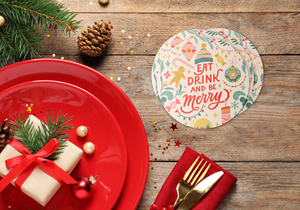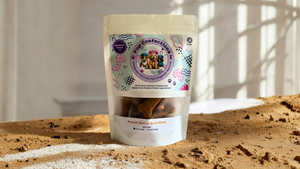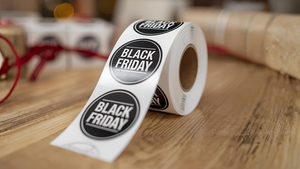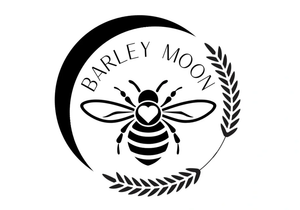How to Create Custom Labels for Your Products

Creating custom labels for your products can be a fun and rewarding experience. Whether you’re a small business owner, an artisan, or just someone who loves a good DIY project, custom roll labels can add that professional touch to your products. Who doesn’t love showing off their creativity?
Let’s dive into this step-by-step guide to help you design and create the perfect product packaging labels for your products.

Step 1: Define Your Brand and Purpose
First things first, think about your brand and the purpose of your labels. Are you going for a sleek, modern look or something more rustic and charming? Knowing your brand's personality will guide your design choices.
- Who’s your audience, and what do they like?
- What message do you want your labels to send?
- List the must-have elements like your logo, product name, and any crucial info.
Step 2: Choose the Right Materials
Next up, materials! The material you choose should reflect your brand's image and suit the product's usage conditions. Let’s dive into some popular options and what makes each one shine.
Paper Labels
- Matte Paper: Matte paper labels are perfect for a classic, understated look. They’re great for indoor products that don’t need to withstand a lot of wear and tear. Plus, they're easy to write on if you'd like to add a personal touch.
- Gloss Paper: If you’re looking for something a bit more vibrant, gloss paper labels are your go-to. The glossy finish makes colors pop and adds a touch of elegance. These are also ideal for indoor use and can handle a bit more handling than matte paper.
Waterproof Polypropylene Labels
- White Polypropylene: These labels are durable and water resistant, making them perfect for products that might get wet or are used outdoors. They’re also resistant to tearing and can handle more rugged conditions. Great for cosmetics, food containers, and bottles.
- Clear Polypropylene: Clear labels offer a “no-label” look, allowing your product to shine through. They’re just as durable and waterproof as their white counterparts but provide a sleek, modern appearance. Ideal for transparent containers where you want the product itself to be the star.
- Silver Polypropylene: Want to add a bit of luxury? Silver polypropylene labels give your products a metallic sheen that screams premium. They’re perfect for high-end products or limited-edition items where you want to make a statement.

Step 3: Design Your Labels
Now for the fun part – designing! If you're not a designer, no worries. Plenty of online tools can help you design a product label that will grab attention on any shelf.
Think bold colors, eye-catching fonts, and images that represent your product. Design software like Canva and Adobe Spark are great for creating stunning designs, even if you’re not a pro. Don't rush the design process. Taking your time is the best way to avoid common mistakes. Your label is the first thing customers see, so make it count!
Step 4: Include Essential Information
Don’t forget the essentials! Your custom product labels should include all the important info like your product name, logo, ingredients, and how to use it. This isn’t just about looking good; it’s about giving your customers the details they need. Plus, a little witty tagline never hurt anyone!
Also, don't forget that some products need specific info on their labels by law. Be sure to include any necessary warnings, nutritional facts, or other details that apply to your industry. Better to be safe and cover all your bases!
Essential info to include:
- Product name
- Brand logo
- Tagline or slogan
- Ingredients or materials
- Instructions for use
- Contact information or website
- Barcode or QR code if needed
- Legal requirements like warnings or nutritional info

Step 5: Print Your Labels
Printing time! Decide whether you want to print at home or use a professional service. Home printing is great for small batches and testing out designs. For larger batches, go pro. Online services like Stomp offer high quality materials with options for finishes like gloss or matte laminates. Just make sure your design looks sharp and your art file is print ready!
Step 6: Apply Your Labels
Stick 'em on! Clean your product's surface with water, dry, then carefully apply your labels. Start from one edge and smooth out any bubbles as you go. For round containers, a label applicator can help. This step might seem simple, but a little precision goes a long way in making your product look top-notch.
Make Your Labels Shine
Creating custom labels for your products can significantly boost your brand's image. By following these steps, you can design and produce roll stickers that look professional and tell your brand's story effectively. Ready to start? Dive into the design process and watch your products shine with beautiful custom labels!
If you need a hand, check out Stomp for all your custom label printing needs. Our easy-to-use online design tool and top-notch printing services will bring your vision to life!

FAQs
What are the best materials for custom labels?
The best materials depend on your product and brand image. Matte or gloss paper is great for indoor products with a classic vibe. White or clear polypropylene is durable and waterproof, perfect for products that might get wet. Silver polypropylene adds a touch of luxury and makes your labels pop.
How can I ensure my labels meet legal requirements?
Check out the labeling rules for your industry. This might mean adding nutritional info, warnings, or other compliance details. Including these will make sure your labels are not just looking good but also ticking all the legal boxes.
What tools can I use to design my labels?
Plenty of online tools are available, such as Canva and Adobe Spark. These tools offer templates and design elements to help you create professional-looking labels, even if you're not a designer.
Should I print labels at home or use a professional service?
Printing stickers for products at home is great for small batches and testing out designs. For larger quantities and higher quality, use a professional service. Online services like Stomp offer high-quality materials and finishes to make your labels look their best.
How do I apply labels to ensure they look professional?
Clean the product's surface with water to remove any dust or oil and dry throroughly. Start applying the label from one edge and smooth out any bubbles as you go. For round containers, a label applicator can help ensure precision and a polished look.
- Tags:
- Nashira Edmiston

























